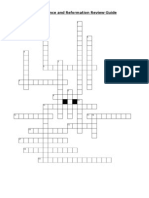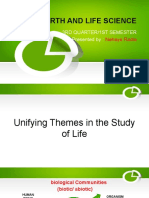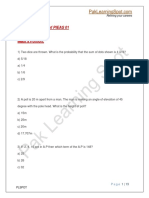Atomic Structure Lab 3
Uploaded by
08090311Atomic Structure Lab 3
Uploaded by
08090311Name: Lab Partner: Atomic Structure A Journey into the Atom
Period: Date:
Introduction: Atoms are composed of subatomic particles, such as the protons and the neutrons, which make up the nucleus of the atom and are similar in mass, and electrons, which are found orbiting the nucleus in an electron, cloud and have a negligible mass. All atoms contain the same kinds of particles but may differ in the number of each particle. This accounts for the presence of isotopes and ions for the different elements. This activity will allow you to use what you know about the composition of the atom, as well as isotopes and ions, to describe sixteen atoms. The atoms are contained in Ziploc bags and the subatomic particles are coded as follows. Protons black beans Neutrons white beans Electrons popcorn Purpose: Students will collect data and relate number of subatomic particles to atomic number, mass number, electrical charge, atomic symbol, and name of element. New Terms: isotope, ion Equipment: Materials: Ziploc bags representing atoms
Procedure: Analyze each Ziploc bag (atom) and record its vital statistics in the data table provided. Data Analysis: 1. List all sets of isotopes. How do you know they are isotopes? 2. List all sets of ions. How do you know they are ions? Conclusions: A nuclear reactor generates a very large amount of energy by splitting a uranium235 atom to produce Barium-139 and Krypton-94. How would each of these atoms be represented using the coding system used for atoms #1 - 16?
Atomic Structure A Journey into the Atom Bag # # of # of # of Atomic Mass Electrical Chemical Protons Neutrons Electrons Number Number Charge Symbol
Name
1 2 3 4 5 6 7 8 9 10 11 12 13 14 15 16
You might also like
- (Ebook PDF) Essentials of Meteorology: An Invitation To The Atmosphere 7th Edition 2024 Scribd Download100% (2)(Ebook PDF) Essentials of Meteorology: An Invitation To The Atmosphere 7th Edition 2024 Scribd Download41 pages
- AP World History Prologue Notes + Reflection100% (2)AP World History Prologue Notes + Reflection14 pages
- 100 Ways To Pass The Earth Science Regents With Test TipsNo ratings yet100 Ways To Pass The Earth Science Regents With Test Tips4 pages
- PDF Holt Environmental Science Test Bank Mybookdircom0% (1)PDF Holt Environmental Science Test Bank Mybookdircom13 pages
- General Physics 2: Quarter 3 - Module 5BNo ratings yetGeneral Physics 2: Quarter 3 - Module 5B31 pages
- Physicsskill and Practice Physical Science Worksheets1No ratings yetPhysicsskill and Practice Physical Science Worksheets1387 pages
- Renaissance and Reformation Review GuideNo ratings yetRenaissance and Reformation Review Guide4 pages
- Science 20F: Chemistry Exam Review 1 of 6No ratings yetScience 20F: Chemistry Exam Review 1 of 66 pages
- What Is Science?: Facts Collected For Reference and AnalysisNo ratings yetWhat Is Science?: Facts Collected For Reference and Analysis5 pages
- Environmental Science: Concepts and Connections: Jane Heinze-FryNo ratings yetEnvironmental Science: Concepts and Connections: Jane Heinze-Fry32 pages
- (Ebooks PDF) Download American History A Survey 13th Edition Alan Brinkley Full Chapters100% (2)(Ebooks PDF) Download American History A Survey 13th Edition Alan Brinkley Full Chapters64 pages
- Social Studies Junior 2020-2021 Instructional Pacing Guide Social Studies, An in Egra Ed ApproachNo ratings yetSocial Studies Junior 2020-2021 Instructional Pacing Guide Social Studies, An in Egra Ed Approach21 pages
- Laura Trout Editor POGIL Activities for AP Biology 2012-2-2100% (1)Laura Trout Editor POGIL Activities for AP Biology 2012-2-2253 pages
- Geography Class 06 The Earth Our Habitat PDFNo ratings yetGeography Class 06 The Earth Our Habitat PDF75 pages
- g10 Ntot Physics Electricity and MagnetismNo ratings yetg10 Ntot Physics Electricity and Magnetism36 pages
- Plate Tectonics and Rock Cycling - TG - WebNo ratings yetPlate Tectonics and Rock Cycling - TG - Web392 pages
- Building Blocks of Life Unit Book Guide: Chapter 1: Reviewing Introductory BiologyNo ratings yetBuilding Blocks of Life Unit Book Guide: Chapter 1: Reviewing Introductory Biology6 pages
- URBIZTONDO, Anne Marie SANTOS, Hannah Joyce BALDIRAY, Sarah Jane REYES, Jan PatrickNo ratings yetURBIZTONDO, Anne Marie SANTOS, Hannah Joyce BALDIRAY, Sarah Jane REYES, Jan Patrick21 pages
- Teacher Guide: Element Builder: Learning ObjectivesNo ratings yetTeacher Guide: Element Builder: Learning Objectives3 pages
- Cambridge International AS & A Level: Physics 9702/42 February/March 2022No ratings yetCambridge International AS & A Level: Physics 9702/42 February/March 202217 pages
- Grade 4 Science: Static Electricity: Next Generation Science StandardsNo ratings yetGrade 4 Science: Static Electricity: Next Generation Science Standards7 pages
- Andrea Damascelli: ARPES On Correlated Electron SystemsNo ratings yetAndrea Damascelli: ARPES On Correlated Electron Systems94 pages
- Final Revised Neet JR Star Co-Super Chaina Cbse) Teaching Schedule For 2024-26No ratings yetFinal Revised Neet JR Star Co-Super Chaina Cbse) Teaching Schedule For 2024-2626 pages
- Movement of Fermi Level (E) With Temperature: Dr.G.Veera Senthil Kumar, Assistant Professor, IMUNo ratings yetMovement of Fermi Level (E) With Temperature: Dr.G.Veera Senthil Kumar, Assistant Professor, IMU12 pages
- Handbook of Luminescent Semiconductor Materials 1st Edition Leah Bergman - Download the ebook now and own the full detailed content100% (2)Handbook of Luminescent Semiconductor Materials 1st Edition Leah Bergman - Download the ebook now and own the full detailed content71 pages
























































































